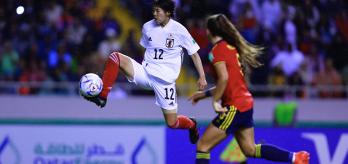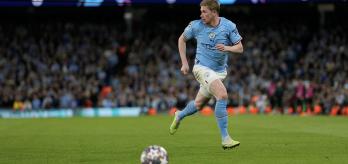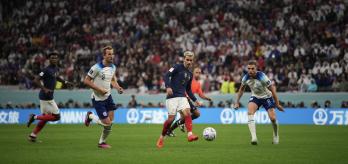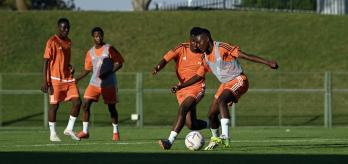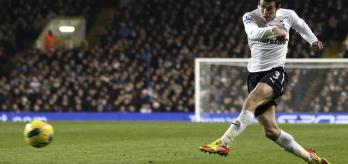When we watch players like Lionel Messi, Xavi or Kevin de Bruyne, we are astounded by their ability to execute passes that seem impossible to mere mortals. To spot these gaps, they need to "scan" their surroundings for information. In this presentation, Dr Karl Marius Aksum builds on his earlier research brief to discuss this scanning in more detail, elaborating on the theory behind it and exploring how coaches can hone this skill in training. His presentation is followed by a Q&A session hosted by Dr Paul Bradley.
Define what we mean by "scanning." Demonstrate the importance of perceptual skills in a football context. Set out the implications of the study for coaches and practitioners and highlight areas for further research.
There is a clear link between scanning frequency and pass completion, and there are also significant variations in scanning frequency between different positions on the pitch. Players don't fixate on details when they scan – scans usually last fractions of seconds and focus on colours and movement.
Training drills need to replicate in-game situations to be effective, and coaches could also consider introducing a number of sensory constraints or sensory overload into their drills to help develop perceptual skills. Research should go beyond the laboratory and move towards more field work.
Watch presentation
Read summary
Part 1: Background and definitions
Dr Aksum begins his presentation by explaining the theoretical background to perceptual skills, citing James J. Gibson's scientific theory of direct perception. Given that most research in this area has been done under laboratory conditions rather than in a football environment, he then sets out in detail how these skills translate onto the pitch with the aid of comments by Andrea Pirlo and Christian Pulisic. Finally, Dr Aksum defines exactly what we mean by "scanning," using a video of legendary Spain midfielder Xavi to illustrate how players scan during games.
Part 2: Findings
The findings of Dr Aksum's study concentrate on scanning and eye tracking, and provide a number of significant insights for coaches. For example, they show that central midfielders scan the pitch most often, while forwards scan the least. Moreover, the eye tracking data from the study showed that the average scan lasts just 0.4 seconds, and only 2.3% of scans included a "fixation" – a player looking at one spot for long enough to capture details. This tells us that players scan primarily for colour, movement and space.
Part 3: Implications
The results of this series of studies suggest a number of significant theoretical and practical implications for practitioners. One of the most important is that perception is intertwined with action on the pitch, meaning that laboratory-based experiments could be of limited usefulness when investigating the role of perception in sport. From a practical point of view, the results underline the need to ensure that training drills replicate the types of scenarios players will face during games, which means they also need to be position-specific.
Part 4: Coaching techniques and future research
Dr Aksum then suggests some specific methods coaches might apply when looking to hone their players' perceptual skills. Examples might include deliberately exposing players to more stimuli during training sessions than they would ever have to deal with in a match, or by imposing sensory constraints on drills liking stopping players from speaking to each other. Finally, he concludes his presentation by highlighting a number of areas in which further research is required, and particularly the urgent need for more representative field research in this area.
One of Aksum's scanning exercises:
Q&A
01:24
We know scanning is a very specialised area. How did you get into this field?
02:59
There is a difference between "looking" and "seeing." Can you talk a bit about the difference between scanning for scanning's sake and scanning for information?
05:29
You mentioned that central midfielders scan the most, but you said forwards scan the least, which was surprising. Can you tell us more about that?
08:41
When you were watching your video footage, were there any specific tactical situations that led to more scanning? If so, what might the implications be for coaches?
10:29
Might coaches be doing exercises that actual decrease players' scanning ability? Do you have any examples?
12:00
Does more always equal better in relation to scanning, or is there a finer line between scanning rates and performance?
14:23
Do you feel that moving too far away from 11v11 games can be detrimental from a scanning/perceptual perspective?
17:24
The game is getting faster. Do you think scanning profiles will change in response to that?
19:36
Did you find any unexpected findings in your studies that you didn't predict beforehand?
21:34
How important do you think scanning will be for the youth players coming through academies now?
22:36
VR is in the game now. How will these kinds of technology further enhance things like scanning skills?
25:14
If you had one piece of advice for coaches looking to improve this skill, what would it be?






